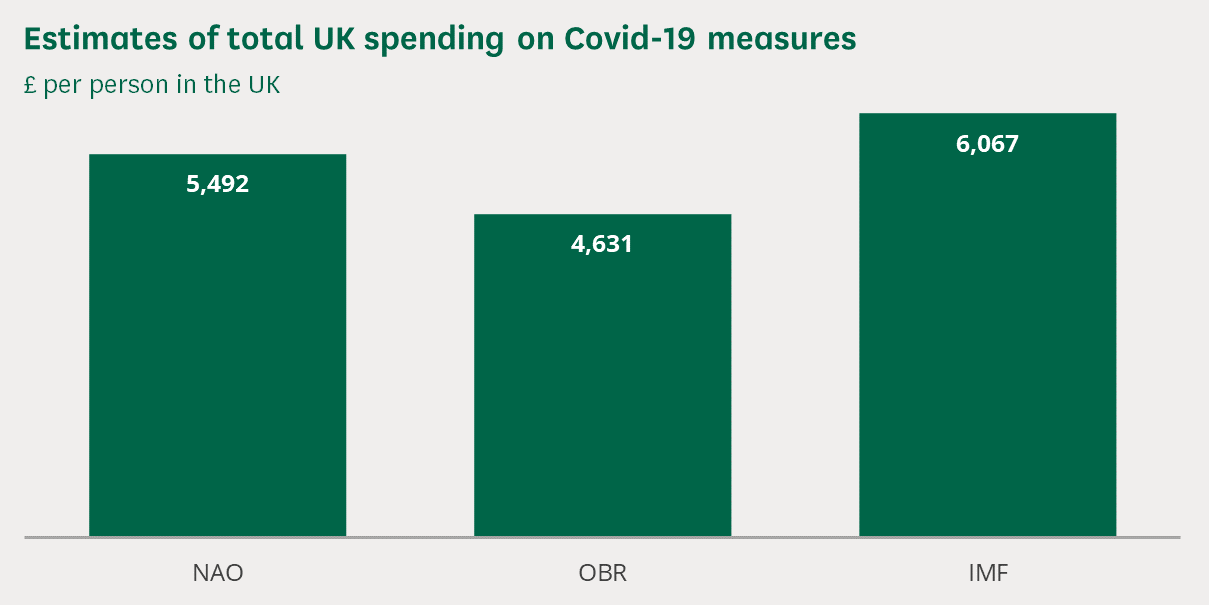GOV UK. Public spending during the Covid-19 pandemic. [£310 to £410 Billion] House of Commons Library. Research Briefing. 29 March 2022
[FOR EDUCATIONAL PURPOSES]
This briefing looks at the very high level of UK public spending on tackling the Covid-19 pandemic, including how the money was spent and where it came from.
Documents to download: Public spending during the Covid-19 pandemic (612 KB , PDF)
The Covid-19 pandemic has resulted in very high levels of public spending. Current estimates of the cost of Government measures announced so far range from about £310 to £410 billion. This is the equivalent of about £4,600 to £6,100 per person in the UK.

Source: National Audit Office, Office for Budget Responsibility, International Monetary Fund (see section 1.1 of the full briefing for details). Calculated using UK population estimate from ONS, Population estimates for the UK, England and Wales, Scotland and Northern Ireland: mid-2020, 25 June 2021
Official figures show that spending in 2020/21 was about £167 billion higher than had been planned before the pandemic for that year.
Most of this extra money was spent on public services (such as the NHS), support for businesses, and support for individuals. Some of the largest schemes include the Coronavirus Job Retention Scheme (CJRS, sometimes called the furlough scheme) and NHS Test and Trace.
The departments responsible for the most extra spending were HMRC, the Department for Health and Social Care, and the Department for Business, Energy and Industrial Strategy.
All public spending is eventually paid for by taxes and other government income, but the amounts raised by these fell during the pandemic (which is common in recessions). The Government accounted for this shortfall by increasing borrowing to £323 billion in 2020/21. As the cost of borrowing is currently very low, this doesn’t pose an immediate problem, but does leave the public finances vulnerable to increases in these costs.
Although most spending directly related to the Covid-19 pandemic is currently forecast to end after 2021/22, the long-term effects of the pandemic may cause pressures in public spending for some time to come.
In the Autumn Budget and Spending Review in October 2021, spending forecasts increased substantially, particularly for health spending. However, it’s not clear how far this is a response to the pandemic.
